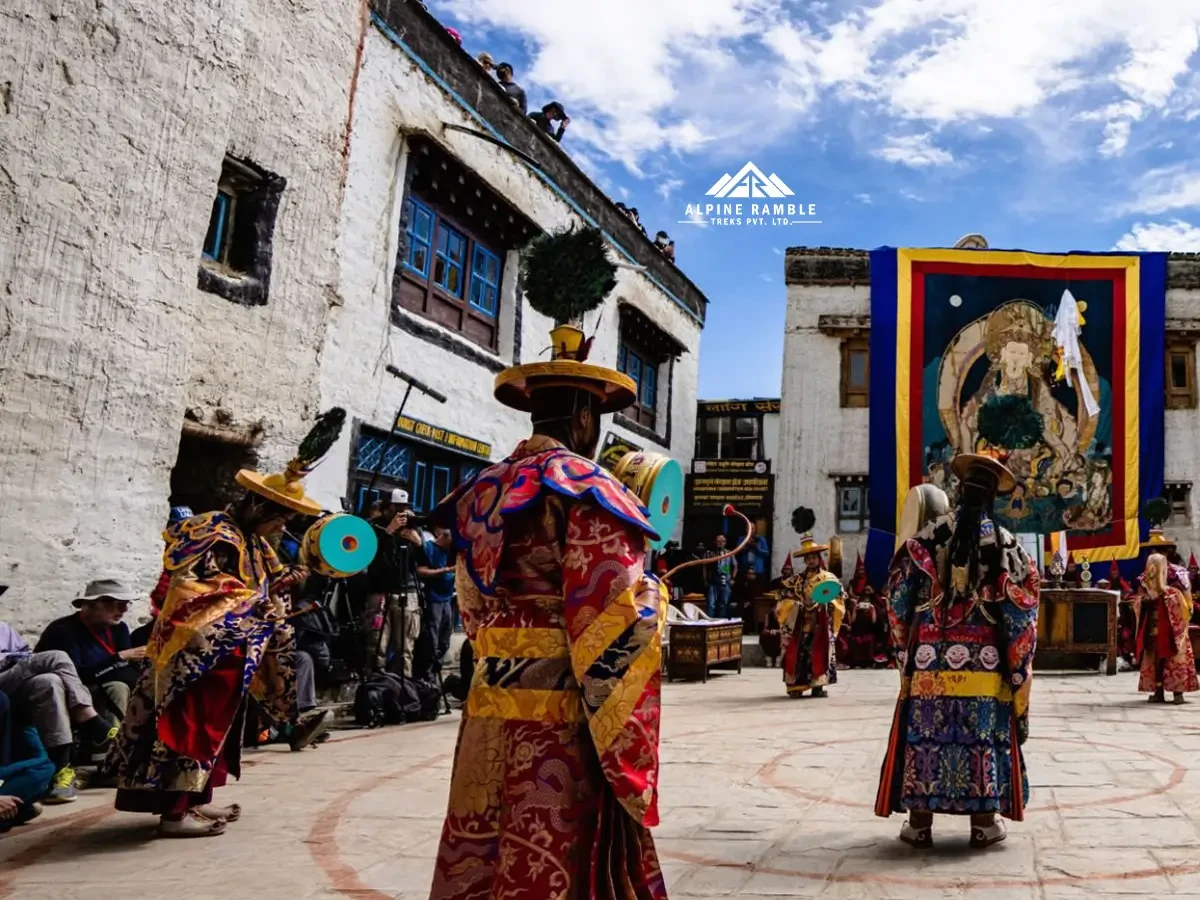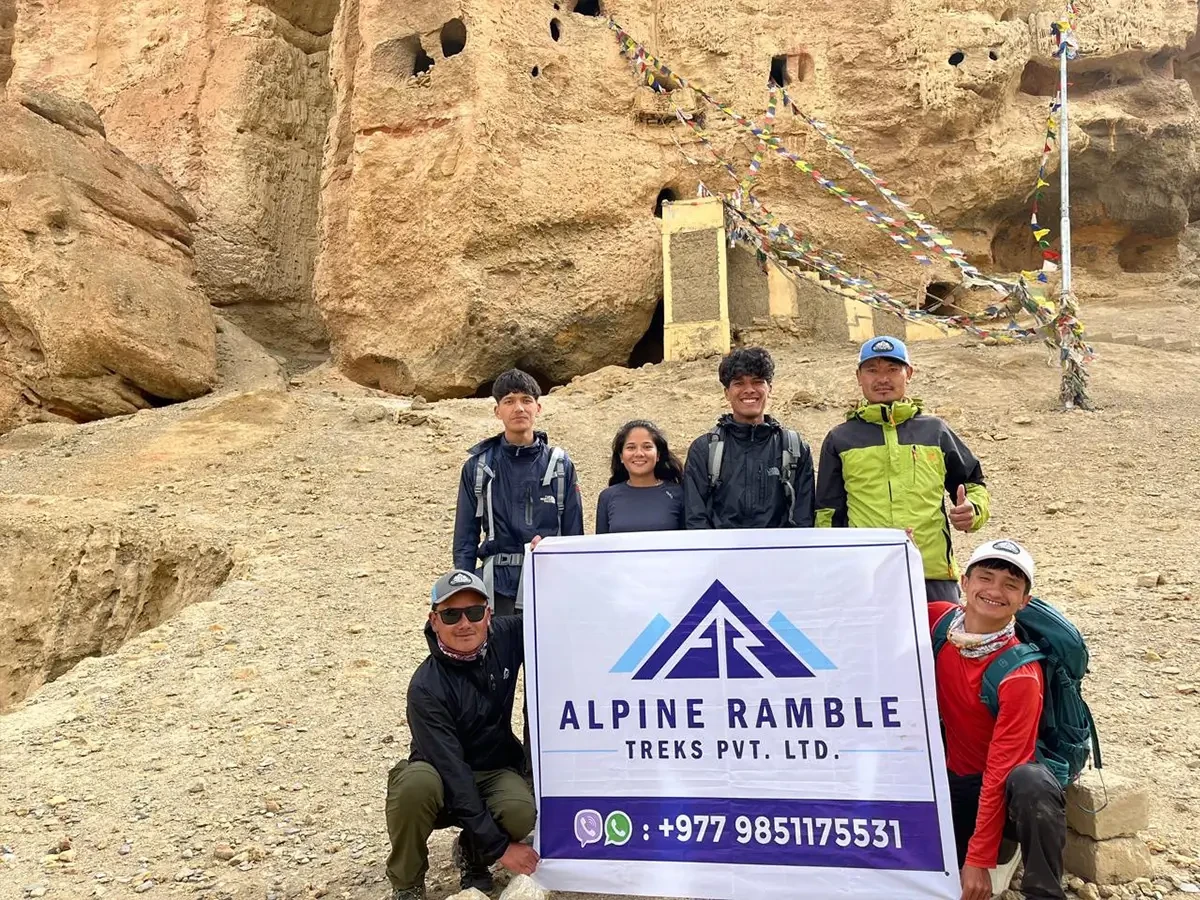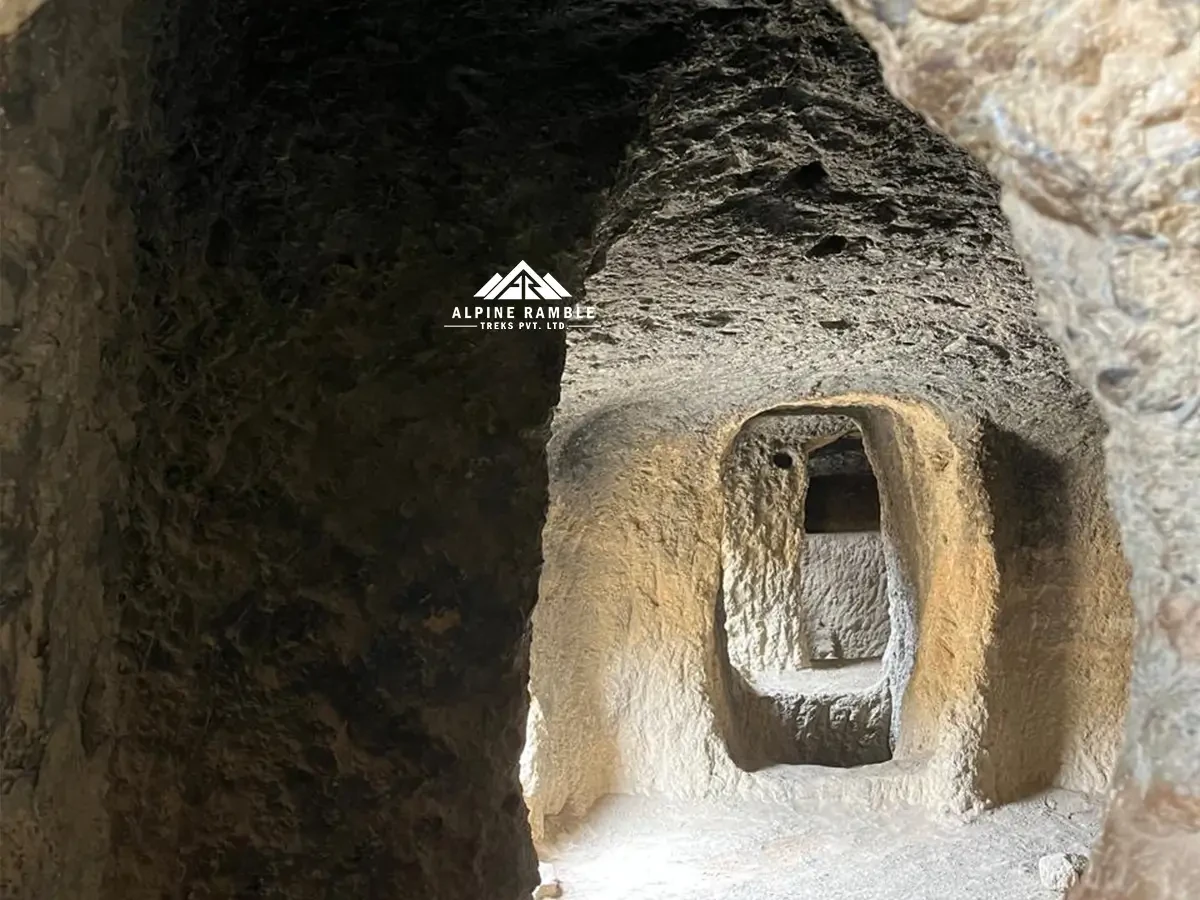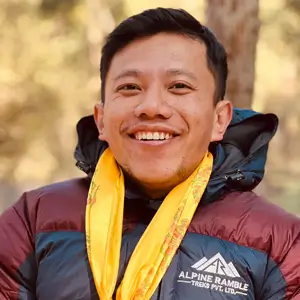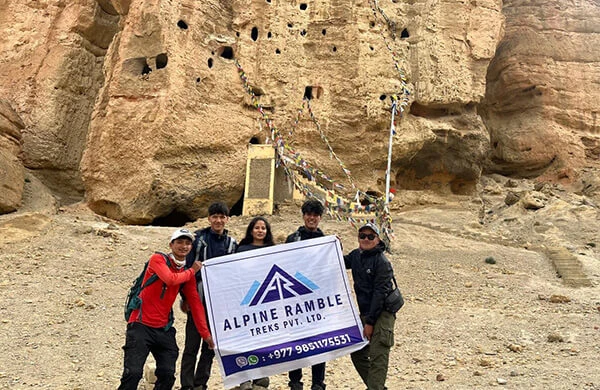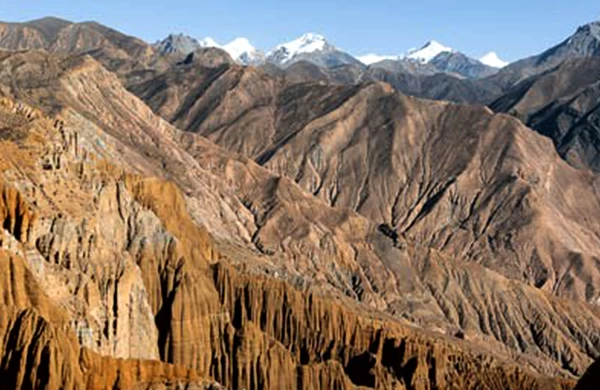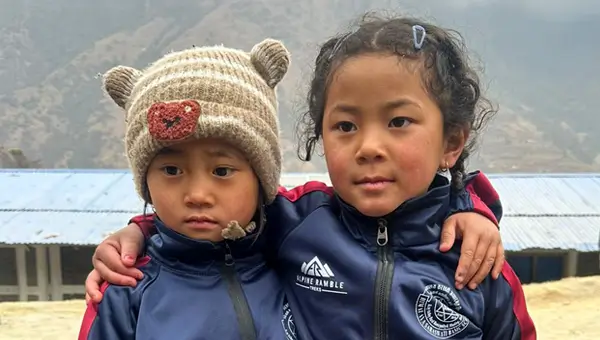Upper Mustang Tiji Festival Jeep Tour & Trek 2026
The Upper Mustang Tiji Festival Trek is an experience of a cultural explosion consisting of different rituals for three days straight. The destination Upper Mustang itself is absolutely stunning, with snow-capped peaks of the Annapurna Range, Dhaulagiri Range, and Nilgiri Range, along with other equally gorgeous mountains. And improving on perfection, Upper Mustang offers a culturally rich experience with Tibetan Buddhism practices, numerous monasteries, prayer flags, mani walls, and festivals, where the Tiji Festival, also known as “The Chasing of the Demons,” is one of the biggest celebrated festivals in the region.
The Tiji Festival is celebrated annually in Cheode Monastery in Upper Mustang. While the exact date is determined according to the Tibetan Lunar Calendar, for convenience, we can assume that it mainly falls in the month of May. The Tiji Festival is a celebration of good over evil where the monks of the monastery, along with the local communities, perform intricate rituals and dances. It is a moment when many communities come together for a big cultural celebration.
The trek to the Upper Mustang to witness the exuberance of the Tiji Festival is something that must be done at least once in your lifetime. Not only is it exciting and something entirely different but also a highly spiritual experience. So plan your Upper Mustang Tiji Festival Trek or a Jeep tour for the upcoming festival with Alpine Ramble and be part of something magical! Furthermore, the detailed explanation about the Upper Mustang and Tiji Festival is given below.
Upper Mustang
Located in the northern part of the Mustang District, the Upper Mustang has been a prominent center for Tibetan Buddhism for many centuries. Lo Manthang, the walled city, also known as the “mud-walled town,” is a Buddhist cultural hub of Mustang. The “Lo” of Lo Manthang is named after its inhabitants, the Lobas. The region of Upper Mustang is surrounded by Tibet on three sides, with gigantic snow-covered mountain peaks on the east and west. It is why the local communities have Tibetan influences in their culture and livelihood.
For the longest time, trade and animal husbandry have been the main source of income for the people but now tourism has allowed them to diversify their income source. Upper Mustang is one of the most popular tourist destinations in Nepal and a hotspot for archeological studies, as it is rich in both natural and cultural heritage.
The history of Upper Mustang and Lo Manthang, with the samples found in the cave of the settlements there, is said to supposedly date back to 4000 BC. And according to the historical study, it is shown that Upper Mustang used to be an independent state established by King Amepal in 1440 AD. It remained a local autonomous kingdom even after the annexation of modern Nepal, where the king regime came to an end in 2008.
The three monasteries, Jyampa, Thubchen, and Choede, and the royal palace in Lo Manthang are among the major places to visit, which collectively offer the significant paintings, sculptures, manuscripts, and other artifacts along with its intangible heritage. And the vibrant festival of Tiji is celebrated in Choede Monastery with colorful ceremonies through performed dances, prayers, and pujas.
Upper Mustang Tiji Festival Celebration
The Tiji festival is celebrated in Lo Manthang of the Upper Mustang. The original name of Tiji is “Tenpa Chichi Rimdo,” which means revering the teachings of Lord Buddha, making it flourish in the world to ward off the evil spirits. The “Tenpa Chichi Rimdo” later on became “Tenchi Rimdo,” which comes as an abbreviation of the original name. Subsequently, the name "Tiji" emerged, which is now commonly recognized in modern times.
The history of the Tiji Festival dates back all the way to 1650 AD, when the Sakya Trijin Ngawang Kunga Sonam came to Mustang, accepting the invitation made by the 8th king (Gyalpo), Samdrub Rabten. History also indicates that the festival was also called Phur Dog, which means the expulsion of the evil energies and negativities through Kila (Phurba-Dagger).
The Tiji Festival is celebrated during the month of May, and the date is set as per the Lama in accordance with the Tibetan Lunar Calendar. And furthermore, what most people are not aware of is that the Tiji festival is actually celebrated two times in a year. The first and major one is in mid-May, where there are a large number of participants and viewers, including the local people, tourists, and even the royal family of Mustang.
The second Tiji Festival celebration falls around the end of the Nepali month Bhadra, which is around mid-September. While all the rituals, pujas, and performances remain the same, with the exact amount of days, the spectators are very few during this. Only the Lamas and a few villagers are present during the second celebration of the Tiji Festival.
First Day of Upper Mustang Tiji Festival
Tyoleh Jangchup Drubpa
On the first day, the ceremony officially begins at noon, where the monks assemble and offerings are made to the Choede Monastery with prayers of Vajra Kumara or Vajra Kila. There is an unfolding of a big Thanka of Padmasambhava (Guru Rinpoche) on the walls of the royal palace of Lo Manthang. The Thanka painting is assumed to be around 400 years old and the local Lopa communities of Lo Tsho Dun observe the festival, showing the utmost respect for the symbol of purity and enlightenment.
The lama known as “Choho Lama” is the one who oversees the entire process by teaching others. The prayers are chanted while others with masks perform dances with intricate steps and patterns. The dance known as “Tsa Chham” initially begins at the royal palace, a private show before the public is allowed to watch. The steps are gradual and slow as the dancers move out of the palace and out into the courtyard. The dance is said to have a total of 52 different steps, with one set of dances that lasts about a couple of hours.
This day is especially meant to pay respect to Dorje Jono, who once saved the kingdom from an evil demon that tormented the people. The prayers and dance specifically show the birth of the deity and his early struggles.
Second Day of the Upper Mustang Tiji Festival
Mehleh Dakedawa
The second day is the main function, which begins with prayers to the Vajra Kila. At noon, the real part of the festival begins as the dancers with different masks begin their performance. On the first day, they unveil another large Thangka as the dancing begins. One of the major differences between the first and the second day is the style of dancing. The dance pattern on the first day is gentle and calm, whereas, on day two, the steps get even more aggressive and fast-paced.
The dancing style on this day is meant to replicate the glorious fight between Dorje Jono and the demon. This dance is known as Nga Chham. There are female performers, adorning their traditional attire and jewelry, actively participating in the performance. Two of the main dances performed are called Dungmar and Cheumar. This is also known to be the main day of the spiritual celebration of this festival.
Third Day of the Upper Mustang Tiji Festival
Banishing of Demon
It is the third and last day of the Tiji Festival and begins with morning prayers by the Lamas, offering their sincere respects to Vajra Kila at the Choede Monastery. Then the official ceremony of dance and other rituals commences in the afternoon. It is where the Choho Lama subjugates the Mara with the Phurba, hence called Phur Dok.
The ceremony includes making a bell out of sattu (roasted flour mix) under the supervision of Choho Lama, which is led by the king as they go to the nearby fields and throw it away as the monks chant their mantras. They perform this ritual at three different points as per the decision of the Choho Lama and destroy the bell, symbolizing the throwing away of evil.
The Tiji festival not only represents the celebration of good over evil and prayer for peace in the world but is also a connection of the local communities, monks of the monastery and royal family to Tibetan Buddhism and its teachings. It is a time when everyone comes together as one to celebrate this colorful festival, including tourists from many different countries.
And between the festivals, people gather in their homes and enjoy the celebration with feasts that include their cultural foods and drinks, as well as dance and sing their traditional songs. It is a festival where both the tangible and intangible cultural heritage tell a story of the Lo Manthang of Upper Mustang, where once Dorje Jono defeated and banished a demon from the land.
Upper Mustang with Tiji Festival Itinerary for 2026
The Tiji Festival, celebrated in Lo Manthang of Upper Mustang, always falls in the month of May but the exact date can differ as per the Tibetan Lunar Calendar. And if you missed participating in this festival last year, then you can always plan for next year, as the exact dates of the Tiji Festival are already out. Now you can plan ahead, sort out your schedule and save your budget to take part in one of the most spiritual festival experiences that Nepal has to offer.
Upper Mustang with Tiji Festival Itinerary for 2026
The Tiji Festival, celebrated in Lo Manthang of Upper Mustang, always falls in the month of May but the exact date can differ as per the Tibetan Lunar Calendar. And if you missed participating in this festival last year, then you can always plan for next year, as the exact dates of the Tiji Festival are already out. Now you can plan ahead, sort out your schedule and save your budget to take part in one of the most spiritual festival experiences that Nepal has to offer.
When does the Upper Mustang Tiji Festival fall in 2026?
The official date for the Tiji Festival for 2026 is from 14th May, 2026, to 16th May, 2026.
The date and 10-day itinerary for the Upper Mustang Tiji Festival 2026 are listed below:
7 May 2026—Arrival day in Kathmandu
8 May 2026—Flight from Kathmandu to Pokhara and Drive to Jomsom from Pokhara
9 May 2026—Trek from Jomsom to Muktinath
10 May 2026—Drive to Kagbeni and Trek to Chile
11 May 2026—Trek from Chele to Syangmochen
12 May 2026—Trek from Syangmoche to Ghami
13 May 2026—Trek from Ghami to Tsarang
14 May 2026—Trek from Tsarang to Lo-Manthang, 1st Day of Tiji Festival
15 May 2026—Participate in 2nd Day of Tiji Festival Celebration
16 May 2026—Participate in the 3rd and final day of the Tiji Festival celebration.
17 May 2026—Drive from Lo-Manthang to Jomsom
18 May 2026—Flight from Jomsom to Pokhara and Fly back to Kathmandu
Note: While our package offers the experience of the Tiji Festival with the Upper Mustang Trek, we can also customize the itinerary for those who would prefer a Jeep tour. The Upper Mustang Tiji Festival Jeep Tour is another way to get fully immersed in the cultural richness of Tibetan Buddhism. The jeep tour offers comfortable travel and takes fewer days compared to the trek. So, if it is something you are interested in, please get in contact with Alpine Ramble and we will assist you to make your dream trip come true. Thank you for choosing us.
Upper Mustang Tiji Festival Altitude and Acclimatization
While the Upper Mustang itself generally sits at an average altitude of 4,000 meters (13,123 feet) above sea level. But for this specific itinerary, where Lo Manthang is the highest point, the highest elevation for this tour will be 3,840 meters. The chances of getting altitude sickness on this tour are pretty low, as we will gradually ascend and even stay at the same location for multiple days.
But that being said, low does not mean zero, so taking better care of yourself will help prevent acute mountain sickness and get your body to acclimatize properly. Along with gradual ascent, drinking plenty of water, eating good diet food and getting proper rest will drastically help minimize the risk of AMS.
Upper Mustang Tiji Festival Permit Cost
There are two specific permits required to enter Upper Mustang. The first one is the Annapurna Conservation Area Permit (ACAP), as the location falls within the boundary of the protected area. Whereas the second permit is called the Restricted Area Permit (RAP), as Upper Mustang is classified as a restricted area.
The cost for the Restricted Area Permit (RAP) for Upper Mustang is $500 per person for the first ten days and an extra $50 for each day added. On the other hand, the Annapurna Conservation Area Permit (ACAP) costs Rs. 3000, which is approximately $25.
Upper Mustang Tiji Festival Distance
The total overall distance of Lo Manthang, Upper Mustang, from Kathmandu is approximately 462 kilometers by road. While there are flights to certain points, such as Kathmandu to Pokhara and Pokhara to Jomsom, they might not always be as reliable due to the unpredictable weather. And upon breakdown, the total distances are as follows:
Kathmandu to Pokhara: 200 km (Flight as per our Itinerary)
Pokhara to Beni: 96 km
Beni to Jomsom: 76 km (Flight option from Pokhara)
Jomsom to Lo Manthang: 90 km
Guide and Porter Cost for the Upper Mustang Tiji Festival
Choosing our local agency, Alpine Ramble Treks, based in Nepal, will provide you with the best of the best in experienced local guides and helpful porters. The average cost for a licensed trekking guide ranges from $30 to $35 per day, whereas for porters it is $20 to $25 per day. On purchase of our package, both guide and porter costs are covered; you can, however, give them tips as gratitude. While it is not mandatory, it is generally expected to tip 15% of the total package cost for the guide and 10% for the porter.
